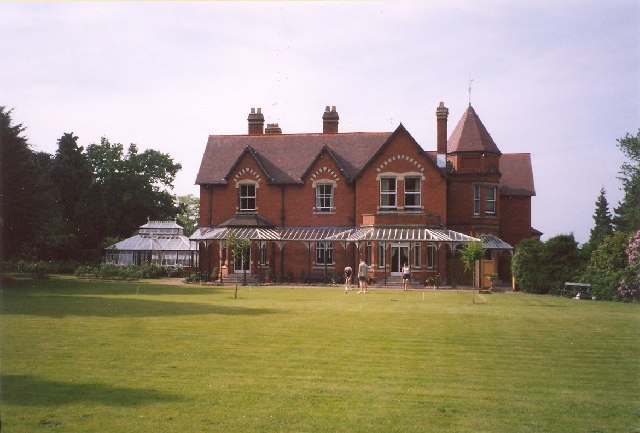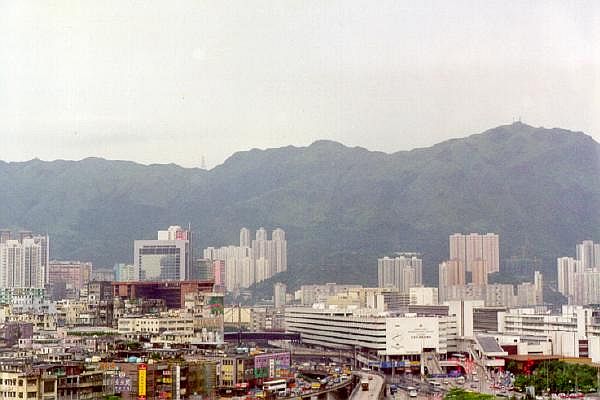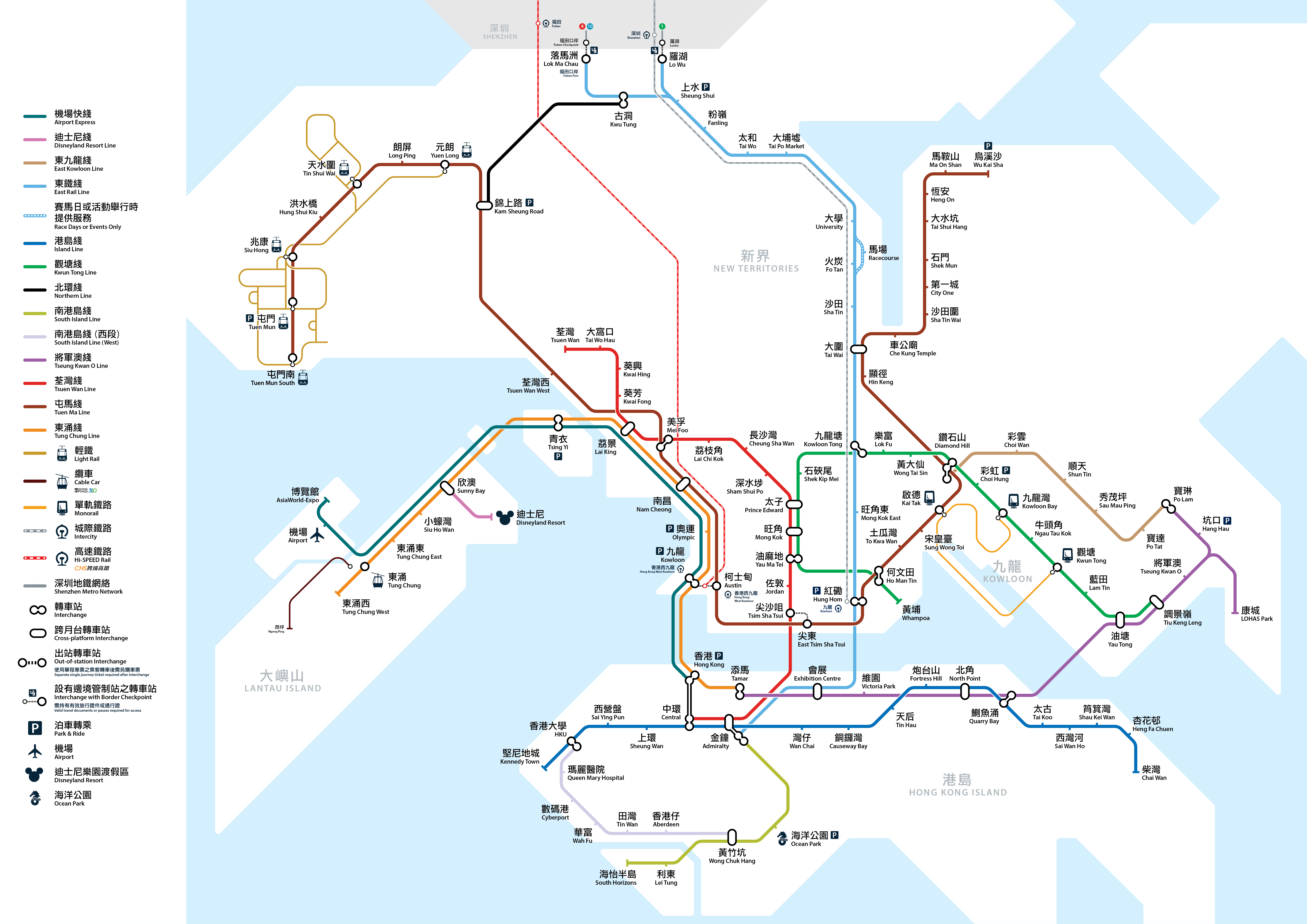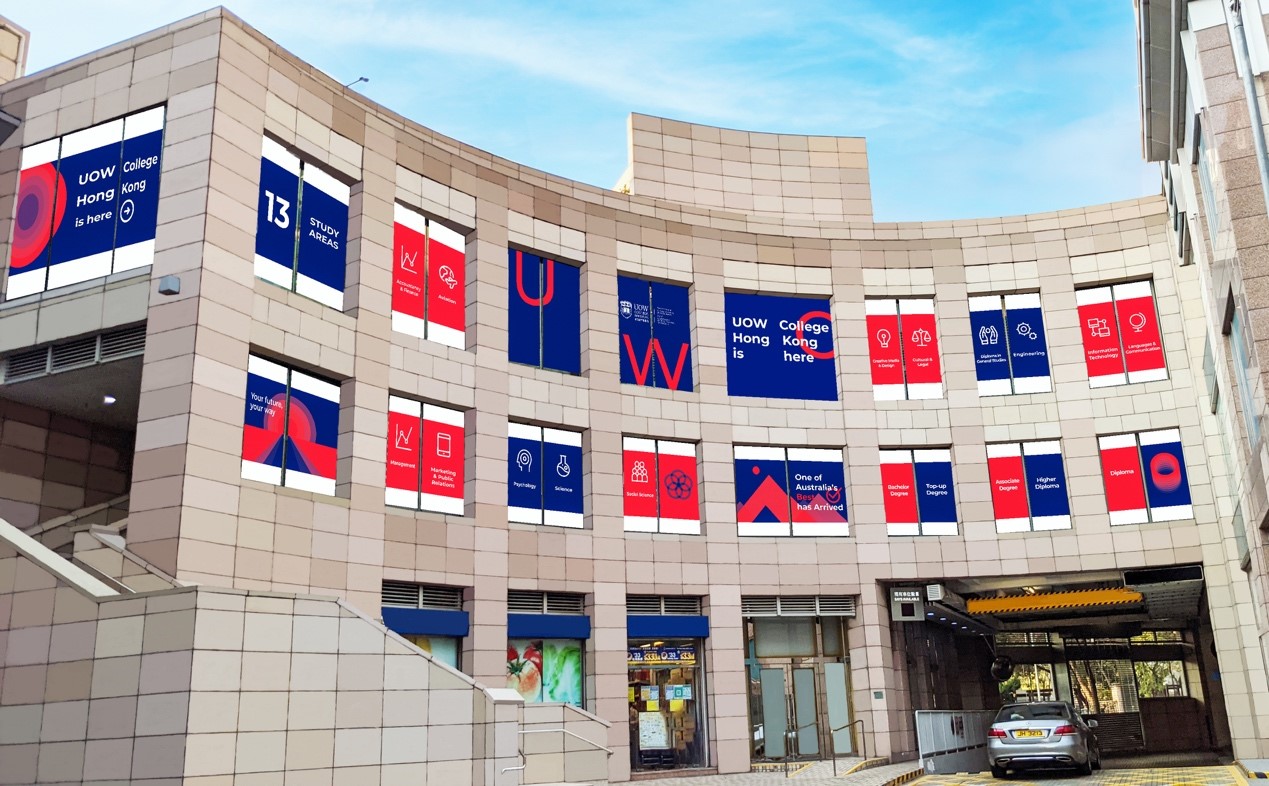|
Telford Garden
Telford Gardens (often referred to as "Telford Garden") is a private housing estate located above the MTR Kowloon Bay Depot and alongside Kowloon Bay station in Kowloon Bay, Kowloon, Hong Kong. It was jointly built by Hang Lung Properties and Hopewell Holdings, and Telford Plaza II was built by New World Development. Being the first property development project of the Mass Transit Railway, the estate is now managed by the corporation. The address of Telford Gardens is 33 Wai Yip Street, Kowloon Bay, Kowloon, Hong Kong. The estate comprises a total of 41 residential blocks completed between 1980 and 1982, organised by alphabetical order (from A to U), with only Block L not sharing its lobby with a twin block. There are 4,992 flats in total. At first, many flats in Blocks R, S and T were bought by the Hong Kong Government as houses for its firemen and policemen, as well as by airlines for their employees as the Estate is near the former Kai Tak Airport, closed 1998. Most of ... [...More Info...] [...Related Items...] OR: [Wikipedia] [Google] [Baidu] |
Telford Garden Ponds 201104
Telford () is a town in the borough of Telford and Wrekin and ceremonial county of Shropshire, England, about east of Shrewsbury, south west of Stafford, north west of Wolverhampton and from Birmingham in the same direction. With an estimated population (for the borough) of 175,271 in 2017 and 142,723 in Telford itself, Telford is the largest town in Shropshire and one of the fastest-growing towns in the United Kingdom. It is named after the civil engineer Thomas Telford, who engineered many road, canal and rail projects in Shropshire. The town was put together in the 1960s and 1970s as a new town on previously industrial and agricultural land and towns. Like other planned towns of the era, Telford was created from the merger of other settlements and towns, most notably the towns of Wellington, Oakengates, Madeley and Dawley. Telford Shopping Centre, a modern shopping mall, was constructed at the new town's geographical centre, along with an extensive Town Park. The M5 ... [...More Info...] [...Related Items...] OR: [Wikipedia] [Google] [Baidu] |
Kai Tak Airport
Kai Tak Airport was the international airport of Hong Kong from 1925 until 1998. Officially known as Hong Kong International Airport from 1954 to 6 July 1998, it is often referred to as Hong Kong International Airport, Kai Tak, or simply Kai Tak and Kai Tak International Airport, to distinguish it from its successor, Chek Lap Kok International Airport, built on reclaimed and levelled land around the islands of Chek Lap Kok and Lam Chau, to the west. Because of the geography of the area positioning the airport with water on three sides of the runway, with Kowloon City's residential apartment complexes and 2000-plus foot mountains to the north-east of the airport, aircraft could not fly over the mountains and quickly drop in for a final approach. Instead, aircraft had to fly above Victoria Harbour and Kowloon City, passing north of Mong Kok's Bishop Hill. After passing Bishop Hill, pilots would see Checkerboard Hill with a large red and white checkerboard pattern. Once the pa ... [...More Info...] [...Related Items...] OR: [Wikipedia] [Google] [Baidu] |
Private Housing Estates In Hong Kong
Private housing estate is a term used in Hong Kong for private mass housing – a housing estate developed by a private developer, as opposed to a public housing estate built by the Hong Kong Housing Authority or the Hong Kong Housing Society. It usually is characterised with a cluster of high-rise buildings, with its own market or shopping mall. Mei Foo Sun Chuen, built by Mobil, is the earliest (1965) and largest by number of blocks (99). Early real estate development in Hong Kong followed the urban street pattern: single blocks are packed along streets and most of them are managed independently, with quality varying from block to block. Private housing estates on the other hand provide integrated management throughout whole estate, attracting more affluent residents. Mei Foo Sun Chuen, Taikoo Shing, Whampoa Garden and City One Shatin are early notable examples. More projects followed and the idea became widely accepted as the middle class of Hong Kong emerged. Trends ... [...More Info...] [...Related Items...] OR: [Wikipedia] [Google] [Baidu] |
Ngau Tau Kok
Ngau Tau Kok is an area of eastern Kowloon in Hong Kong, in the north of Kwun Tong District east to Kowloon Bay. Largely residential, Ngau Tau Kok has a population in excess of 210,000. Geography In Chinese, Ngau Tau Kok means ''ox horn'' or ''ox head cape'': before the reclamation of Kowloon Bay, the coastline of Ngau Tau Kok was shaped like the horn of an ox. Ngau Tau Kok includes two hills - Jordan Valley (Shum Wan Shan) and Crocodile Hill (Ngok Yue Shan), where around half of the residential blocks are located. Crocodile Hill is a relatively quiet residential area encircled by Kung Lok Road. This road is mainly lined with residential blocks and is home to two parks, the similarly-named Kung Lok Road Playground and the Kung Lok Road Children's Playground (about 100 metres apart). The former comprises a cycling area and is linked to the Lok Wah Playground. The latter houses a garden and a children's playground. The two parks were completed by the Urban Council in 1988. ... [...More Info...] [...Related Items...] OR: [Wikipedia] [Google] [Baidu] |
Disneyland Resort Line
The Disneyland Resort line is a heavy rail MTR line connecting Sunny Bay to the Hong Kong Disneyland Resort, coloured pink on the network diagram. It is the seventh line of the former MTR network before the merger of MTR and KCR, and the world's first metro line designed to service a Disney theme park. There are only two stations on this line, Sunny Bay and Disneyland Resort, and the line operates as a shuttle service between these two stations. Sunny Bay station is an interchange station with the Tung Chung line between Tsing Yi and Tung Chung stations. Administratively, the entire line is in Tsuen Wan District, despite being situated on Lantau Island, and is the only MTR line in Hong Kong to run within a single district. Construction The rail link was constructed by Gammon Construction and completed in April 2005. In preparation for the opening of Hong Kong Disneyland on 12 September, the line started operating on 1 August 2005. The rolling stock is distinctive ... [...More Info...] [...Related Items...] OR: [Wikipedia] [Google] [Baidu] |
MTR Rotem EMU
The Rotem EMU (also known as K-Train/K-Stock) is an electric multiple unit that operates on the MTR rapid transit railway system in Hong Kong. They were jointly built by a consortium consisting of Mitsubishi Heavy Industries of Japan and Hyundai Rotem of South Korea and come in two variants: TKE-C651 was delivered for the Tseung Kwan O line (used on the Kwun Tong line until 2009), and TKE-C6522-04E delivered in 2006 to 2007 for the Tung Chung line. In 2003 and 2004, the urban line trains ran on the Tsuen Wan line, Island line and Tseung Kwan O line. The K-Stock trains are different from the R-stock trains built by Hyundai Rotem for the East Rail line extension, which were ordered by MTRC on 14 December 2012, as 37 nine-car sets and entered service on the current East Rail line in 2021. Details Tseung Kwan O line stock The first of the 104 TKE-C651 cars entered service on 26 April 2002. Originally, these trains were designated to serve on the Tseung Kwan O line, but inc ... [...More Info...] [...Related Items...] OR: [Wikipedia] [Google] [Baidu] |
MTR Metro Cammell EMU (DC)
The Metro Cammell EMU (also known as M-Train or Modernisation Train) () is the oldest variation of electric multiple unit that operates on the MTR rapid transit railway system in Hong Kong. A total of 768 cars were built by Metro-Cammell in England (and its successor GEC-Alsthom) between 1977 and 1994, and refurbished from 1998 to 2001 by United Goninan. Features Urban line stock The M-Train, along with the later C-Train, TML C-train, R-train and ex-KCR stock, has five sets of double-leaf sliding doors on both sides of each car, to facilitate rapid boarding and exiting. This is opposed to the K-Train and AdTranz-CAF trains, which use plug doors. They are currently operating primarily on the Tsuen Wan line and Island line but are also operating on the Kwun Tong line and Tseung Kwan O line alongside newer rolling stock. Each car is 3200 mm width over body panel, floor to rail is 1100 mm high and roof to rail is 3910 mm high. A service train has an accel ... [...More Info...] [...Related Items...] OR: [Wikipedia] [Google] [Baidu] |
East Kowloon Line
The East Kowloon line () is a proposed Hong Kong rapid transit line that would run from Diamond Hill to Tseung Kwan O New Town. The route would pass through the hilly Sau Mau Ping residential area, which is not directly served by any MTR, local railway service at present. The scheme was first revealed by the Hong Kong Government in the "''Railway Development Strategy 2014''", published September 2014. The transit scheme is related to government-led redevelopment of the East Kowloon area as well as planned residential development in the Anderson Road, Hong Kong, Anderson Road/Sau Mau Ping district. Overview The estimated construction cost of this line is highest among all seven railway plans proposed in the railway strategy due to the steep terrain along its alignment. The estimated cost is HK$27.5 billion (approximately US$3.5 billion) at 2013 prices, making it HK$3.5 billion (US$450 million) per kilometre for a 7.8 km system. It is recommended the line will begin constr ... [...More Info...] [...Related Items...] OR: [Wikipedia] [Google] [Baidu] |
Kwun Tong Line
The Kwun Tong line is a heavy-rail rapid transit line of the MTR network in Hong Kong, coloured green on the MTR map. Starting at Whampoa in Hung Hom and ending at Tiu Keng Leng in Tseung Kwan O, Sai Kung, the route has 17 stations and takes 35 minutes to complete. The Kwun Tong line is one of the busiest railway lines on the network connecting the central and the eastern portions of Kowloon via Wong Tai Sin. The line is mostly underground, but includes a lengthy elevated section, and runs generally in an east-west direction. During the morning rush hour, the Kwun Tong line utilises 33 trains running at 2.1-minute-intervals to achieve a route capacity of 85,000 pphpd. Opened on 1 October 1979 as the first urban railway line in Hong Kong and the first operated by the Mass Transit Railway Corporation (MTRC), the Kwun Tong line operates over much of the original section of the "Modified Initial System", from Shek Kip Mei to Kwun Tong station, which it is named after. Th ... [...More Info...] [...Related Items...] OR: [Wikipedia] [Google] [Baidu] |
Skatepark
A skatepark, or skate park, is a purpose-built recreational environment made for skateboarding, BMX, scootering, wheelchairs, and aggressive inline skating. A skatepark may contain half-pipes, handrails, funboxes, vert ramps, stairsets, quarter pipes, ledges, spine transfers, pyramids, banked ramps, full pipes, pools, bowls, snake runs, and any number of other objects. History The first skatepark in the world, Surf City, opened for business at 5140 E. Speedway in Tucson, Arizona on September 3, 1965. Patti McGee, Women's National Champion, attended the grand opening. The park had concrete ramps and was operated by Arizona Surf City Enterprises, Inc. A skatepark for skateboarders and skaters made of plywood ramps on a half-acre lot in Kelso, Washington, USA opened in April 1966. It was lighted for night use. California's first skatepark, the Carlsbad Skatepark opened on March 3, 1976. The World Skateboard Championships were held here on April 10, 1977. It operated un ... [...More Info...] [...Related Items...] OR: [Wikipedia] [Google] [Baidu] |
Independent Commission Against Corruption (Hong Kong)
The Independent Commission Against Corruption (ICAC) of Hong Kong was established by Governor of Hong Kong, Governor MacLehose of Beoch, Sir Murray MacLehose on 15 February 1974, when Hong Kong was under colonial Hong Kong, British rule. Its main aim was to clean up endemic corruption in the many departments of the Government of Hong Kong, Hong Kong Government through law enforcement, prevention and community education. The ICAC is independent of the Hong Kong Civil Service and politically-appointed Principal officials of Hong Kong, Principal Officials. The Basic Law of Hong Kong stipulates that the ICAC shall function independently and be directly accountable to the Chief Executive of Hong Kong. Previous to the Handover of Hong Kong, transfer of sovereignty in 1997, ICAC reported directly to the Governor of Hong Kong, and appointments to the ICAC were also made directly by his office. The ICAC is headed by a Commissioner of the Independent Commission Against Corruption, Commis ... [...More Info...] [...Related Items...] OR: [Wikipedia] [Google] [Baidu] |
UOW College Hong Kong
UOW College Hong Kong (UOWCHK) is part of the global network of the University of Wollongong (UOW) in Australia, one of the world’s top 200 universities. Its heritage stems from the Community College of City University (CCCU), established in 2004 under the City University of Hong Kong (CityU), which has a long history of providing higher education to the Hong Kong community. In 2014, CityU partnered with University of Wollongong (UOW) and the college was renamed to UOWCHK in 2020. The medium of instruction is mainly English with some courses supplemented by Cantonese. History Establishment After the discontinuation of fund by the University Grants Committee (UGC) for most of the associate degree Programmes of City University of Hong Kong in 2004, the Community College of City University was established to provide various associate degree Programmes. Alliance With University of Wollongong On 21 November 2014, The University of Wollongong (UOW) and CityU announced their pa ... [...More Info...] [...Related Items...] OR: [Wikipedia] [Google] [Baidu] |



.jpg)




